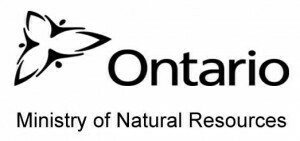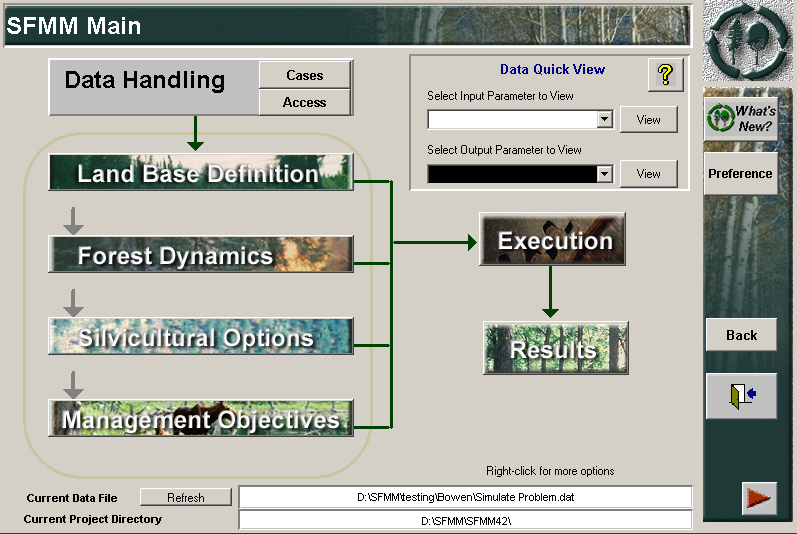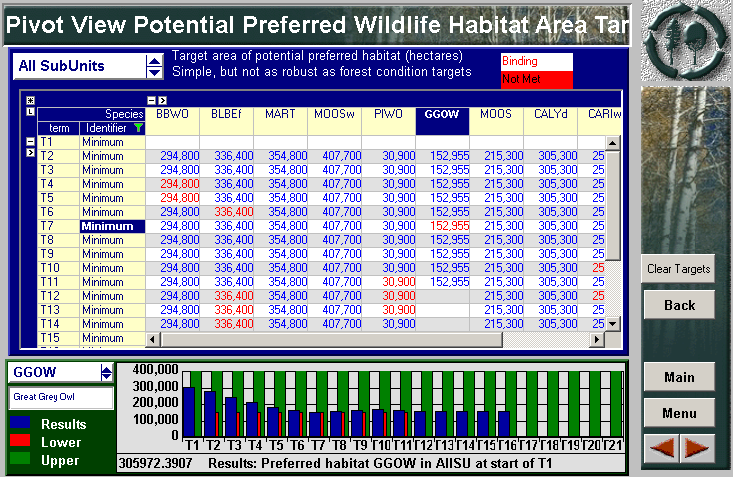Please note, some cited data is a bit dated, but we think that the story is still worth sharing.
Ontario’s Ministry of Natural Resources takes us through decades of effective forest management
Forest ecosystems are highly complex and influenced by a diversity of factors. Sustainable forest management is therefore an ongoing and constantly evolving process which requires an integrated approach. Government bodies, such as The Ontario Ministry of Natural Resources (OMNR), must conform to provincial policies and standards, while taking economical and ecological considerations into account to arrive at optimal forest management policies.
OMNR manages 27 million ha of Ontario’s public forest and has been using an AIMMS-based model for this purpose since 1994. The Strategic Forest Management Model , or SFMM, enables foresters to analyze the relationships between forest condition, silvicultural practices, wood supply and potential wildlife habitat. This analysis enables them to understand how a forest develops through time and explore alternative forest management strategies and trade-offs.
Nearly 2 decades after its launch, we spoke with Dirk Kloss, OMNR’s Resource Modeling Specialist, to find out where SFMM stands today and what their experience using AIMMS has been like.
Dirk, what does SFMM do and what has it helped you achieve?
SFMM is a forest estate model that predicts how a forest changes through time under different types of management. The model brings the following together:
#. *The current forest conditions, such as the type of forest, area and volume*
#. *Silvicultural treatments (harvesting, renewal, tending, etc.) and the forest conditions to which they apply*
#. *How the forest changes naturally (i.e. without treatment) and in response to different silvicultural treatments*
#. How different forest benefits relate to forest conditions (e.g. habitat) and activities (e.g. harvest for timber production)
*Through various LP formulations, SFMM lets foresters quickly examine questions like:
#. *How much sustainable timber can be produced with a given budget while meeting ecological targets?*
#. *What types of silviculture are required to meet ecological targets?*
#. *What are the trade-offs among specific objectives?
*These types of questions are critical to the development of a long-term management strategy for each forest. More recently, there is a need to consider the spatial arrangement of these activities. How we might approach this need is currently one of our largest challenges with respect to SFMM. Aside from its role in forest management planning, SFMM has created a climate of analytical acceptance. People are beginning to turn to mathematical models in other business areas, such as work scheduling and resource allocation.
SFMM main screen
How were things done before the development of SFMM?
SFMM has been around quite a long time; the original version was run under DOS. Before that, we were using forest simulation models on PCs (Forman), DEC-VAX/VMS (Norman), and spreadsheets (MADCalc). I remember taking 15 to 30 seconds to update the spreadsheet model MADCalc. A co-worker remembers having four PCs in his office, each solving SFMM for a different forest. Solve times were often measured in hours. Another colleague recalls, "The secretaries used to hate me when I ran Norman on the VAX because all the word processors would stop working while it ran." So there were limitations then, but these were still huge advances to manual calculations.
What made OMNR choose AIMMS?
In 1994, AIMMS had two critical features: model encryption and a Windows GUI. In GAMS all changes were made in text files and there was no way to encrypt a model. At that time AIMMS was a small business, as I believe was CPLEX Optimization Inc. The rise of IT and Dot-Com was in its infancy, and there were good synergies among the small companies.
What SFMM features do users find most useful?
Users like the consistent look and feel of the GUI which doesn’t require them to learn another syntax. Most end users don’t use SFMM every day, unless they’re preparing a plan; then it’s used daily for about a year. So it’s nice to have something familiar to go back to even if there have been changes.The infeasibility finder is probably the most appreciated feature of SFMM. Before its introduction, users would spend hours trying to determine which targets were causing infeasibilities. The GUI simplifies a lot of potentially frustrating tasks for the end-user. As a result, users can concentrate on carrying out analysis and don’t get hung up on data issues. The free viewer license makes it very easy to share results with people who don’t carry out SFMM analysis. This helps with public involvement and business transparency.
What AIMMS features do the SFMM developers like?
SFMM developers really appreciate the developer interface and modeling language which are designed for mathematical modeling. Little things like global identifier renaming and syntax highlighting make code easier to read and help avoid or detect coding errors. Real-time compilation, auto-completion (Ctrl-Space), and units also help.Our developers like to visualize problems, so it’s common to build a GUI while building and testing a model. Colors are used extensively to visualize data. Pivot tables are quite powerful. A single pivot table can be used for multiple views of the same data, which means less work for the developer.
This screen compares habitat targets to the current solution.
Binding targets are shown in red. The graph at the bottom shows the current solution (blue)as well as minimum and maximum targets (red and green) for the selected wildlife species (e.g. Great Grey Owl – GGOW). Pivot table filtering andcolor highlighting are very helpful for users.
The Math Program Inspector is invaluable for tracking down model problems. When we really need to get up close and personal with a model, there’s the GMP:: library!
I’d be remiss if I didn’t mention the value of AIMMS staff. Over the years, their expertise has been invaluable, not only to SFMM development, but also in tracking down complicated end-user issues.
Are you planning to use AIMMS and optimization in other areas as well?
We have used AIMMS and optimization in a number of areas. We’ve developed a number of resource allocation models to optimize the flow of wood between the forest and mills. A MIP model supports the scheduling of forest management plan development and implementation. A heuristic-based model helps users divide a geographic area into zones based on multiple weighted criteria.
Unlike SFMM, most of these optimization models support one-time projects, so there are only one or two end-users. Nevertheless, they demonstrate an increasing receptiveness to the use of optimization in our business.
One project deserves special mention. About four years ago the Ontario government evaluated over 100 proposals to utilize about 9 million cubic metres of wood. An AIMMS optimization model supported the evaluation. In 2011, this project was recognized with a Technical Award "for professionalism and dedication to the delivery of Ontario’s Wood Supply Competitive Process Initiative".
Visit OMNR’s website to learn more about the ministry’s work.



